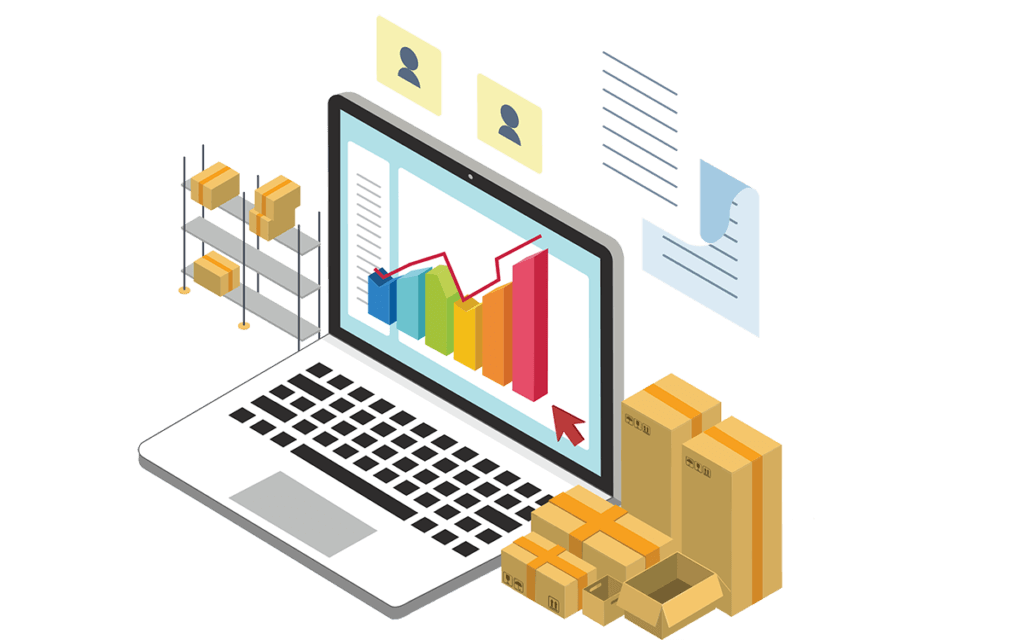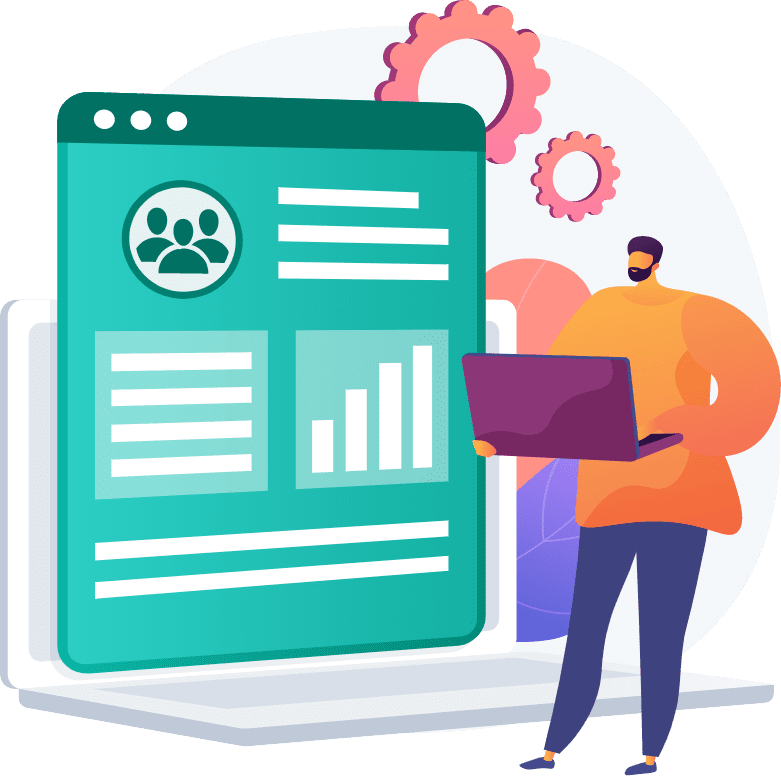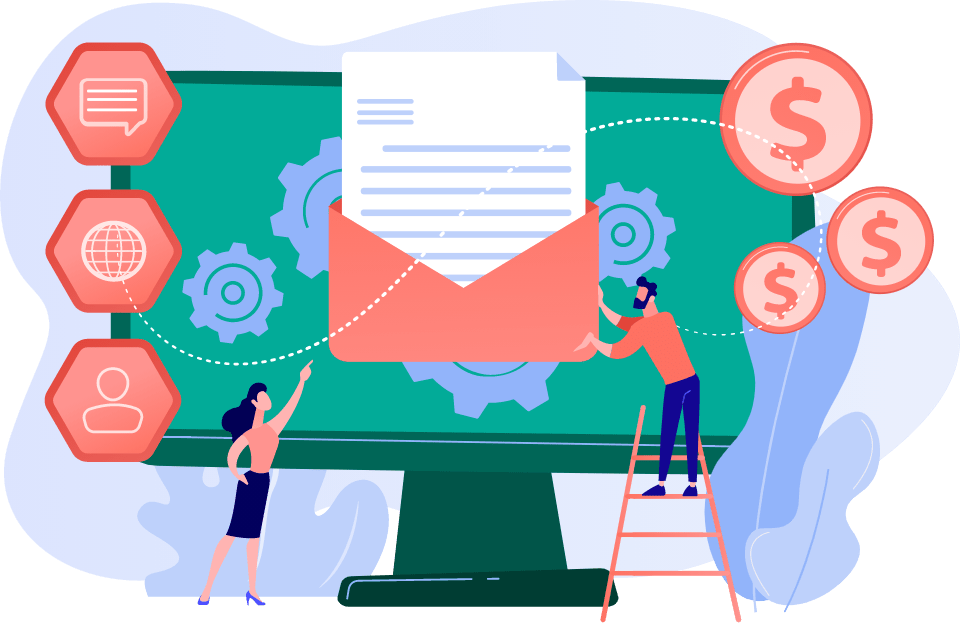Pinnacle Seven Garment ERP

Benefits
- Accurate delivery commitment to the buyers.
- Management and control of the various types of costing.
- Optimum capacity utilisation of each machine.
- Checks and controls of the critical Points like overrun of costs and delivery schedules.
- Online information for the management on the go via mobility solutions
- Graphical dashboards for each function and operations and Business analytics.

Why Do You Need an ERP for the Garment Industry?
The use of technology has enabled businesses to streamline their processes, making them more effective and efficient.
Despite this, the Garment industry is still thought to be fairly intricate.
Managing a business with various variables and numerous interconnected divisions is a challenging task for an owner.
In order to ensure cost-effectiveness, excellent inventory management is key at 70% of the total cost.
Managers must be aware of the inventory inside factory production lines and warehouses at all times.
The Garment industry often struggles with having to manage too many departments separately, leading to time being wasted and money being spent pointlessly when attempting to automate the workflow.
Imagining having to set up multiple different systems, one for Merchandising, one for Accounting, one for the Warehouse, another for Order Management, one for Coordinating Customer Data, and even more for Processing Employee Leaves, Attendance, Payroll, Incentives, and more.
If you’re looking for a single source to manage every aspect of your garment manufacturing business, Pinnacle Seven (P7) Garment Manufacturing ERP provides the perfect solution.
Want to know the numerous advantages you can access as a Garment business owner? Here is a list with all the benefits you shouldn’t overlook.
The advantages that an ERP system can bring to your Garment business make it an essential step forward.
Smooth Merchandising Operations
Our P7 Garment ERP allows you to take absolute control of key parameters from the moment your enquiry arrives, whether it is for a new fashion/design/order, or a repeat order/style. The following list displays the features available for merchandising operations:
- Creation of Products
- Configuring the Bill of Materials
- Creation of the Customer and Adding Merchandising Stages
- Creation of Enquiry
- Attaching one or more tech packs in the enquiry
- Downloading the attached tech pack
- Creation of a New Quotation
- Adding Merchandising Stages to the Quotation
- Sending a Quotation for Approval
- E-mail Notification to Approve or Reject
- Approving Quotation and Confirmation of Sale Order
- E-mail notification to the merchandiser about the quotation status
- Sale Quotation/Order Print
- Send by email: Sale Quotation/Order
- Navigation to the Costing Sheet
- Rejection of quotation
- Resetting Quotation to Draft
- Sending a Quotation for Approval
- Approving Quotation and Confirmation of Sale Order
- Creation of the Next Order against the Quotation
- Creation of Merchandising Stages
- Configuring merchandising stages inside Customer Master
Efficient Sourcing functions:
Sourcing for fabrics, accessories, trims, and packing materials is very crucial, as the quality of your finished garments depends much on the quality of the sourced raw material products. We have the following functions in our sourcing module.:
- Sending the Purchase Order for Approval
- Purchase Order: Multiple Approval Levels
- Confirming the RFQ to the Purchase Order
- Rejection of Purchase Order
- Resetting to Draught and Sending for Approval
- PO Type Master: Fabrics, Accessories, Trims, etc.
- PO Approval Configuration
- PO Terms & Conditions

Streamlined Manufacturing Facilities
The management of raw materials effectively is one of the toughest challenges faced by the garment industry. The quality of the raw materials, such as fabric, accessories, trims, and packing materials, and the condition of the finished goods can increase an organization’s brand value.
Our P7 ERP Software helps the administration with real-time information on various aspects of the manufacturing process, such as cutting, sewing, dyeing, washing, printing, labelling, and packaging, to ensure quality control and effective implementation.
P7 Garment ERP helps with your production planning and control functions for optimal utilization of your resources, such as machine capacity, manpower utilization, and material optimization, etc.


Inventory Management
ERP software helps businesses handle inventory by sorting products into multiple variants such as price, size, colour, design, and vendor categories. P7 Garment ERP automates and dynamically handles all stock activities, ensuring stakeholders receive the right product at the right time.
The inventory management module in ERP software will assist garment manufacturers in achieving optimal inventory levels and reducing waste production while also improving manufacturing efficiency, quality, and processes.
Handle Payments and Receipts Hassle-Free
Many garment businesses struggle to manage multiple customers’ commercials at a time. Assembling multiple orders within varying price ranges and producing bills and receipts for a diverse variety of items makes cost accounting a painful process.
The P7 Garment ERP system creates a multi-rate pricing list with specific discount systems, keeps track of unused credit limits, bill changes, revisions, and maintains selling and purchase ledgers.


Easy Management of Supplier and Customer Queries
Automating the production and inventory accounting processes improves the responsiveness of sales and HR teams to supplier and consumer inquiries.
Sales Operation
One of the most important ways to increase sales is understanding potential clients. An effective ERP system can handle product rotations and consumer demand analysis to provide customized sales.
ERP systems keep track of customer information, including transaction history and frequency. This information helps to better understand garment trends and aid in production planning. With the implementation of an ERP system, customized deals and discounts can be updated to loyal customers regularly via text or email.


Reduced Costs
Planning activities ahead of time would certainly save money for the company. P7 ERP can remove unnecessary labour charges and streamline business processes, reducing human errors and associated risks by automating core operations.
Standardizing internal functions such as staff distribution, inventory control, and financial audits helps companies to track down and cut unnecessary costs that are weighing them down.
Enhanced Reporting / Dashboards
P7 Garment ERP software includes advanced monitoring features. In today’s world, where data is abundant, it is critical to make sense of it in order to get ahead of the competition. P7 ERP system provides visibility into sensitive organizational and financial details.
ERPs can generate custom reports based on divisions and positions, verify financial statements, and monitor them in real-time to understand sales inflows and benefits.
Our dashboards can highlight the up-to-date business information to the key stakeholders, line managers, and operational heads for timely actions.

Key Operations in a Garment Company
Here are some of the key departments of a garment industry that help to run a business smoothly:
Accounts Section
The Accounts Department looks into the following things: Letter of Credit (LC), Country of Origin (COO), Invoice, and Packing List. It also handles the cash flow of the organization.
Production Planning Department
Once the order is confirmed and the pre-production sample is approved, the merchandiser holds preproduction meetings with the department heads. The planning section then estimates and plans the order quantity, plan cut date (PCD), the breakup of the order, operation breakdown, and so on, based on the particular unit.
CAD Section
The CAD department of the garment industry collects different inputs, such as a tech pack, purchase order, fabric details, a 10 parameter report, and pattern. With these, they come up with outputs such as lay reports and consumption per garment.
Merchandising Department
The Merchandising Department understands the buyer’s needs and then tries to make things as expected by the buyer. The Merchandising process involves planning, developing, executing, and dispatching the order (product) to the buyer. The Merchandising method comprises guiding and supervising the successful processing of an order.
Design Department
Many organizations have different departments dedicated to designing areas. The work of this department is to create new and fresh designs according to current market trends or analyse designs received from the buyer.
Sampling Department
Sample quality determines the confirmation of bulk orders, so this department is one of the key departments. This department is also referred to as the product development department. In this department, different types of samples are made, from prototype to the top sample. The merchandiser coordinates with the sampling department.
Fabric and Trim Store Department of the Garment Industry
In-housing the ordered material, comparing it with the BOM and order quantity, keeping a check on the inventory and dead stocks, and reporting the same are all roles of the store’s department. Once the ordered fabric, trims, and accessories are in-house, the store’s department inspects them.
Fabric Inspection Department / Quality Control
The main aim of the fabric inspection department is to analyze fabric defects using various standard methods. Four-point inspection methods and ten-point inspection methods are used to assess fabric quality. Trims and garments are checked with AQL (Accepted Quality Level) 1.5.
Our Quality Control module is tightly embedded in the full cycle, starting from raw materials, production stages, and finished goods despatch.
Maintenance
Zero breakdowns and preventive maintenance are mainly aimed at reducing downtime and increasing the lifetime of a machine. The maintenance department works out the following terminologies: MTTR (Mean Time to Repair), which is the time required to mend a failed machine; and MTBF (Mean Time Between Failures), which is the time between two successive failures.
Production Department
The garment industry’s production department is the heart of a factory, as most people are involved in it. The key function of the production department is to achieve maximum production, productivity, and efficiency with minimum wastage and in the shortest amount of time.
Quality Assurance Department
To maintain and control the quality, the Quality Assurance Department of the garment industry divides the work into different inspection stages: pre-inspection, inline inspection, online inspection, end-line inspection, and final inspection.
HR Department
The HR Department recruit’s new employees as and when required. They look after planning different employee policies, in addition to their pay scales. The training of the newly admitted operators or staff is also taken care of by the HR department. The HR department’s responsibility is to keep the absenteeism and attrition rate to a minimum.
Industrial Engineering
Industrial engineering always considers ways to improve. The industrial engineering department of the garment industry works on improving productivity, production, quality, calculating efficiency, and more.
When it comes to improving the process in the garment industry, with so much to do, what if you had a one-stop shop to take care of these vital functions? ERP does exactly that for you.
JIT Inventory
Just-in-Time Inventory is an inventory management method that aims to provide inventory and raw materials only when they are needed. An effective implementation of JIT allows organizations to make frequent changes to their designs, follow the latest trends, and sell 85% of their line at full price.
It is necessary to have a solution such as ERP that simplifies the workflow, which is as intensive as in the garment industry. Let us find out what ERP is and how it can help your garment business.
